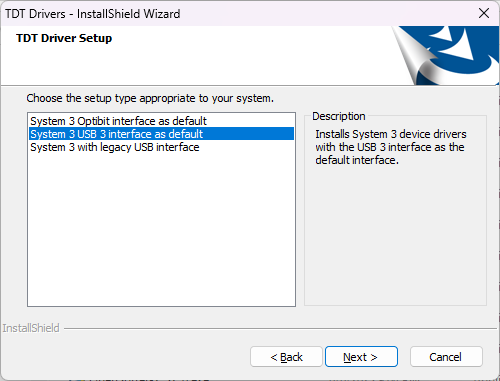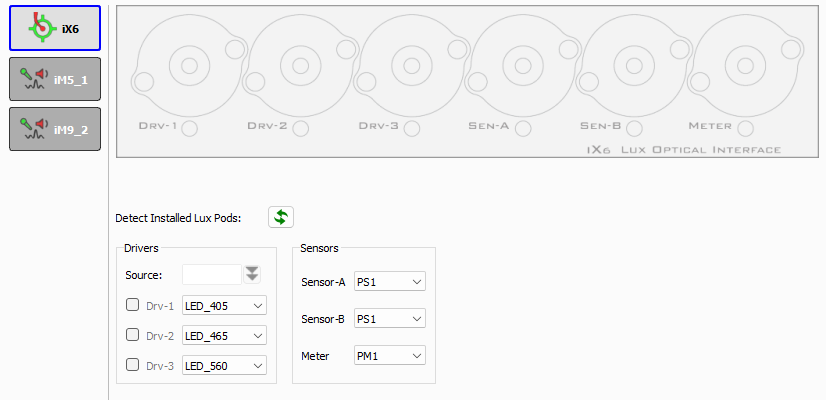Installing iX6 and iConZ
Please carefully unbox your equipment. The iX6 is housed in an iCon interface or iConZ interface. This section covers installation of the iConZ model with USB 3.0 interface. For installation of the iCon model with fiber optic interface, see Installing iX6 and iCon.
iConZ devices connect directly to a USB 3.0 port on your PC or laptop. They have two built-in DSPs and operate as stand-alone devices. You can connect one iConZ to your PC or laptop at a time.
If you have a TDT WS4 or WS8 workstation, then TDT Drivers and Synapse software are already installed. If you are using your own PC or laptop, install the TDT drivers and Synapse software from the USB Storage Drive that was provided with your shipment. During TDT Drivers installation, select the "System 3 USB 3 interface as default" option.

Once the TDT drivers and software are installed, you are ready to connect the iConZ and PC together. Connect the iConZ to a USB 3.0 port on your PC with the provided cable.
Important
The maximum USB 3 cable length is 3 meters total. Most PC front panel USB connectors have additional cable length inside to the motherboard, so use a maximum 2.5 meter cable if connecting to the front panel USB connectors. Otherwise use the back panel USB 3 connectors.
Testing iConZ Processor Communication
Turn the iConZ on. The status LED will light green when it is properly connected to the computer. To check whether there is communication between the iConZ and the PC, open the zBusMon application from the desktop (shown below). The iConZ processors will appear as an "RZ3" device, with information about the driver version and number of DSP cards.
| zBusMon with iConZ Processor |
If you get the "Unable to access device on USB 3" error below, close zBusMon, check the USB cable connection, power cycle the iConZ, and try again.
Click Transfer Test to test communication. If you get an error, click 'Reboot System!' and try again. If there is a consistent error in zBusMon, reconnect the interface cable on the RZ and try again. If you continue to have errors or do not see your RZ appear, please contact TDT for assistance.
Launching Synapse with iConZ
Note
You must be running TDT Drivers and Synapse Version 98 or later.
You can learn more about gizmos and experimental connections in the Synapse Manual.
With your iConZ turned on and connected, launch Synapse from the desktop. If the Licensing Dialog appears, follow the instructions in the Synapse License FAQ to send a licensing request to TDT. Synapse runs for 30 days before requiring a license key. Make sure you select the Fiber Photometry package.
The Rig Editor will then appear, but it will be blank. Click Detect for Synapse to recognize your iConZ. The iConZ and two DSPs will show up in the tree. Finally, click Ok to exit the Rig Editor.
The Rig Editor may be accessed later for modification through the Synapse Menu if your hardware changes. For example, to add modules to your iConZ.
Upon exiting the Rig Editor, your processor and any peripheral equipment declared in the Rig Editor will appear in the Processing Tree.
Detecting Your Fiber Photometry Equipment
Click on the iCon in the Processing Tree, then click on the iX6 module. Click 'Detect Installed Lux Pods' to automatically identify the iX6 LED and sensor configuration.
 |
| Automatically Detect Connected LEDs and Sensors |
Make sure everything matches what you see on the front of the physical iX6, and click the Commit button.
Adding the Fiber Photometry Gizmo
For basic fiber photometry recordings, the experimental setup is simple. Select the RZ3 in the Processing Tree and find the Fiber Photometry gizmo in the Specialized Gizmos category. Drag and drop the Fiber Photometry gizmo onto the RZ3 to form a connection.
The iX6 binds to the Fiber Photometry gizmo.
The Fiber Photometry gizmo reads the iX6 Lux components that were detected in the previous step and pre-configures the default settings. See the Fiber Photometry Gizmo section for more details.
Continue to the Optical Connections section.